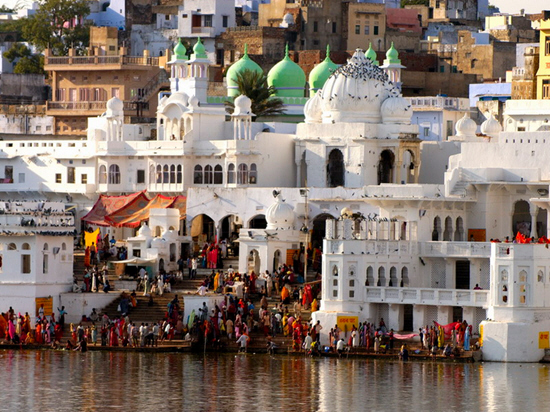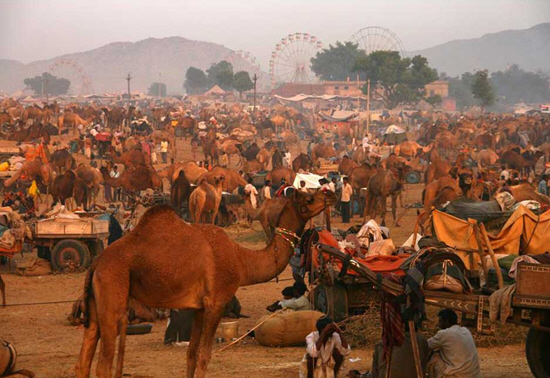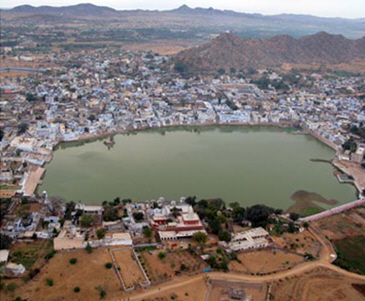
Pushkar, in the Indian state of Rajasthan, is 130 kilometers southwest of Jaipur. The population of Pushkar is about 15,000. The city of Ajmer (400,000) is 13 kilometers to the south. A scenic road from Ajmer to Pushkar winds up and over snake mountain. The elevation of Pushkar 1,500 feet above sea level helps create a moderate climate during Rajasthan’s stiffling hot season.
When to Go: September-March.
How to Get There: Jaipur is easy to get to from many cities by air, rail, or bus. From Jaipur take a train or bus to Ajmer or a bus to Pushkar. Jodhpur, another major city in Rajasthan, is about 230 kilometers from Pushkar.
Where to Stay: For its many visitors, Pushkar has plenty of hotels. The state of Rajasthan runs the comfortable Sarovar tourist bungalow, pleasantly situated on the banks of the lake. If you plan to go during Karttika Purnima (and the camel fair), reserve several months ahead. During the fair, the Rajasthan government provides comfortable lodging for tourists in tents. To reserve either a tent or a room at the Sarovar tourist bungalow, write to Central Reservation Office, Rajasthan Tourism Development Corporation, Ltd., Chanderlok Building, 36 Jan Path, New Delhi 110 001, India. Ajmer, a short bus-ride to Pushkar, also has many hotels.
Where to Eat: Restaurants in Pushkar are allowed to serve only vegetarian food. The Brahmä temple has its own restaurant, known as the R. S. Restaurant.

